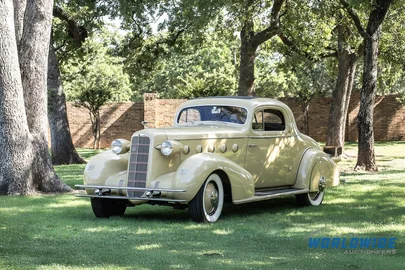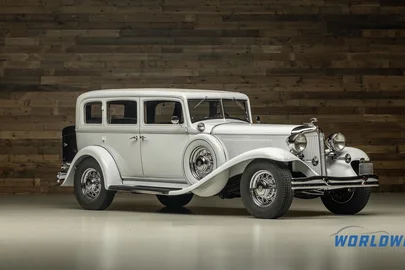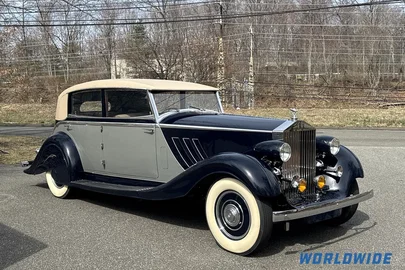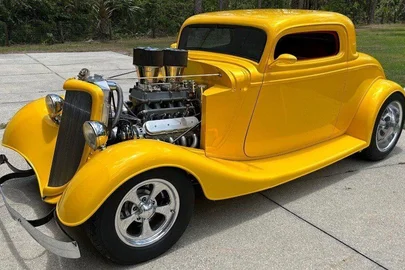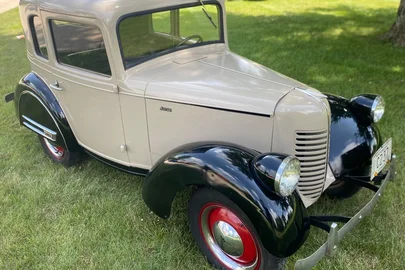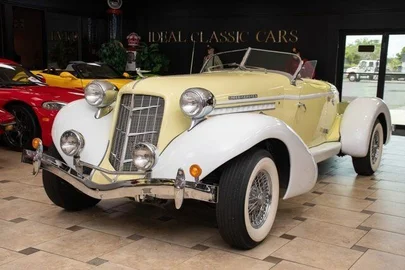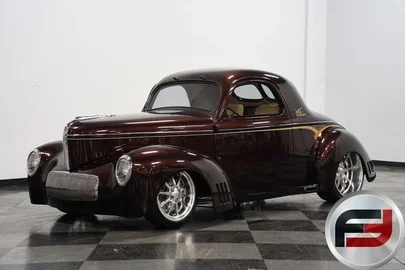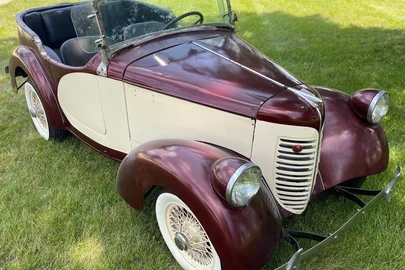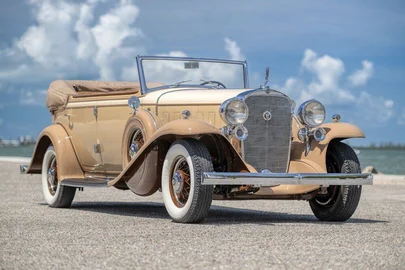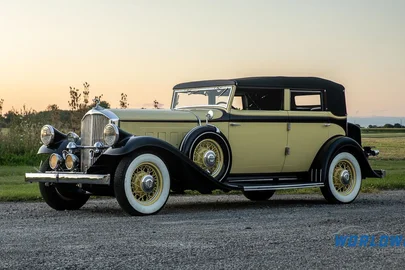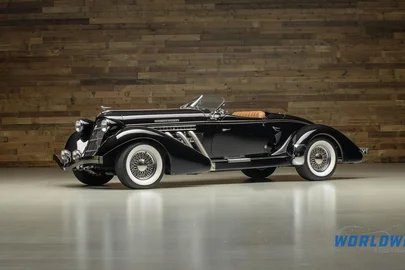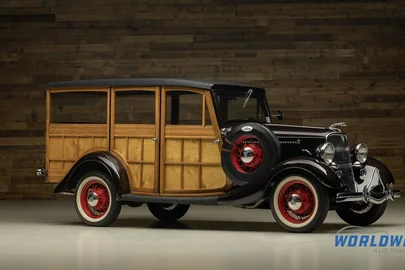
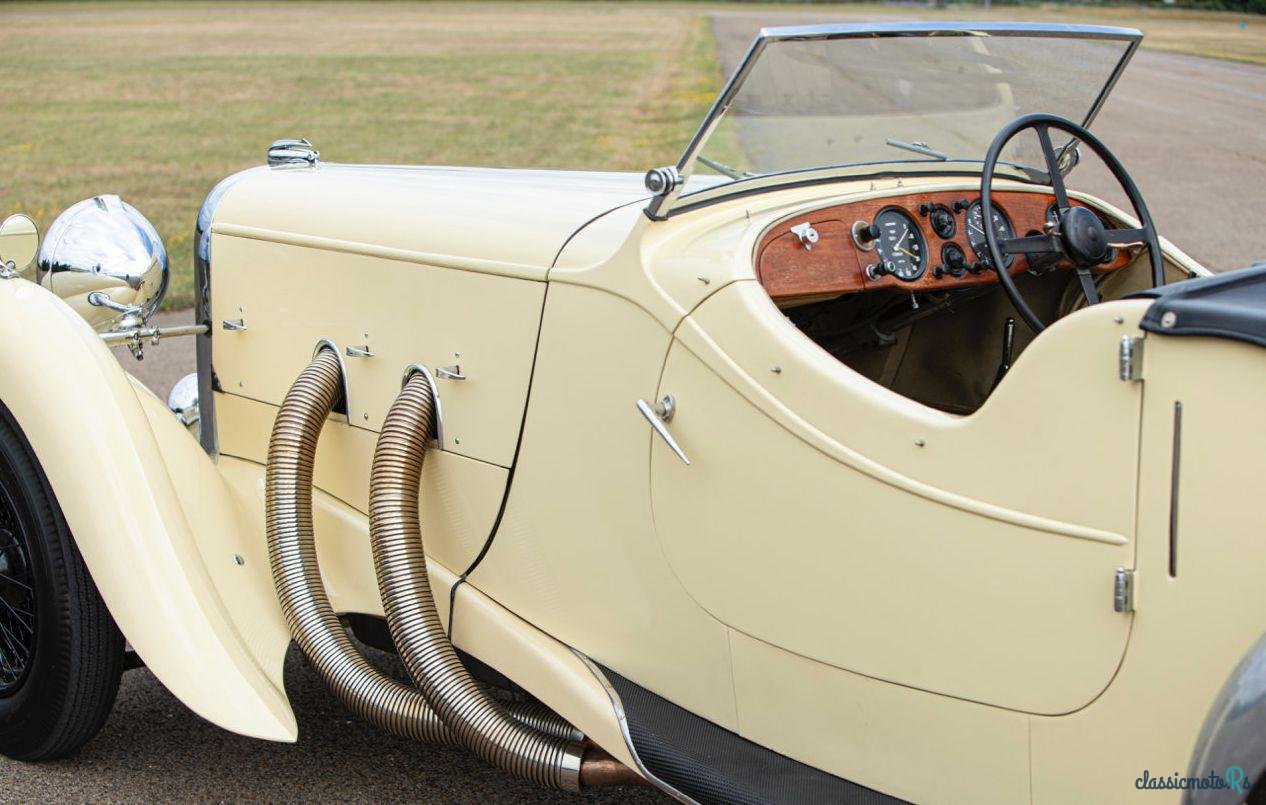
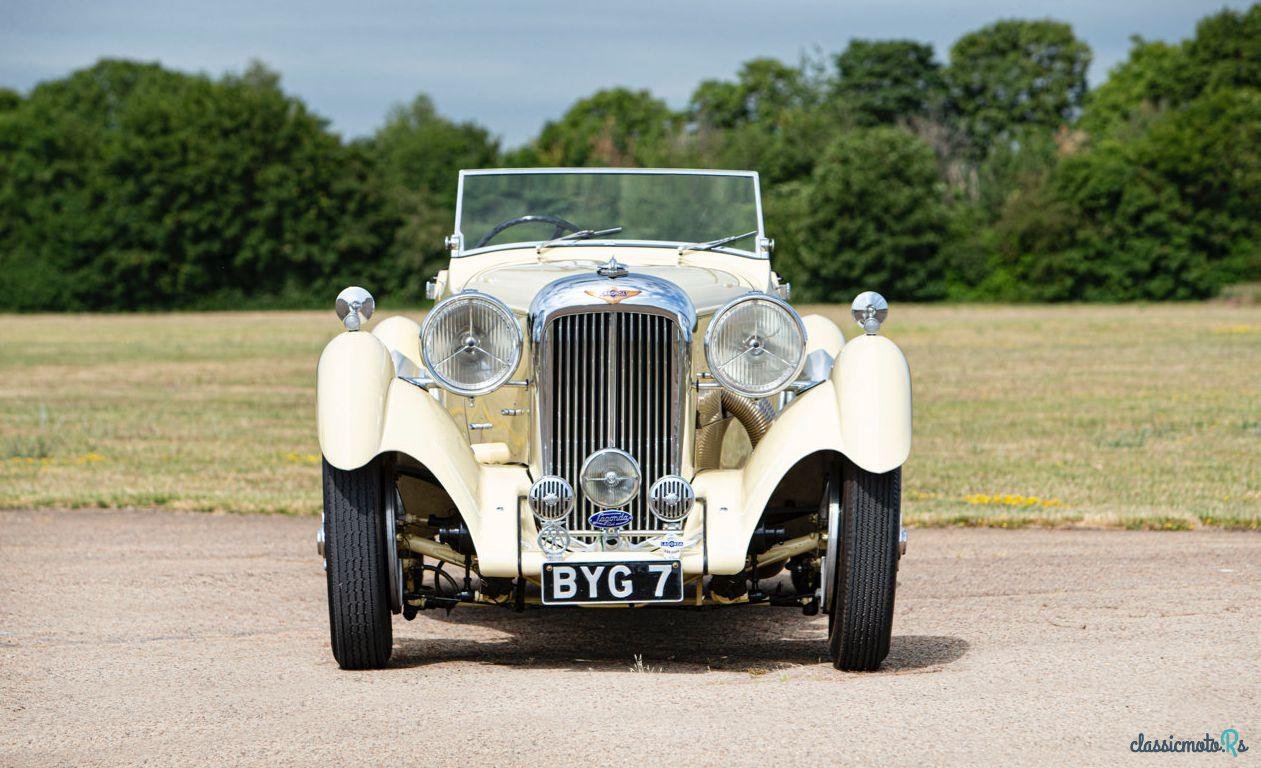
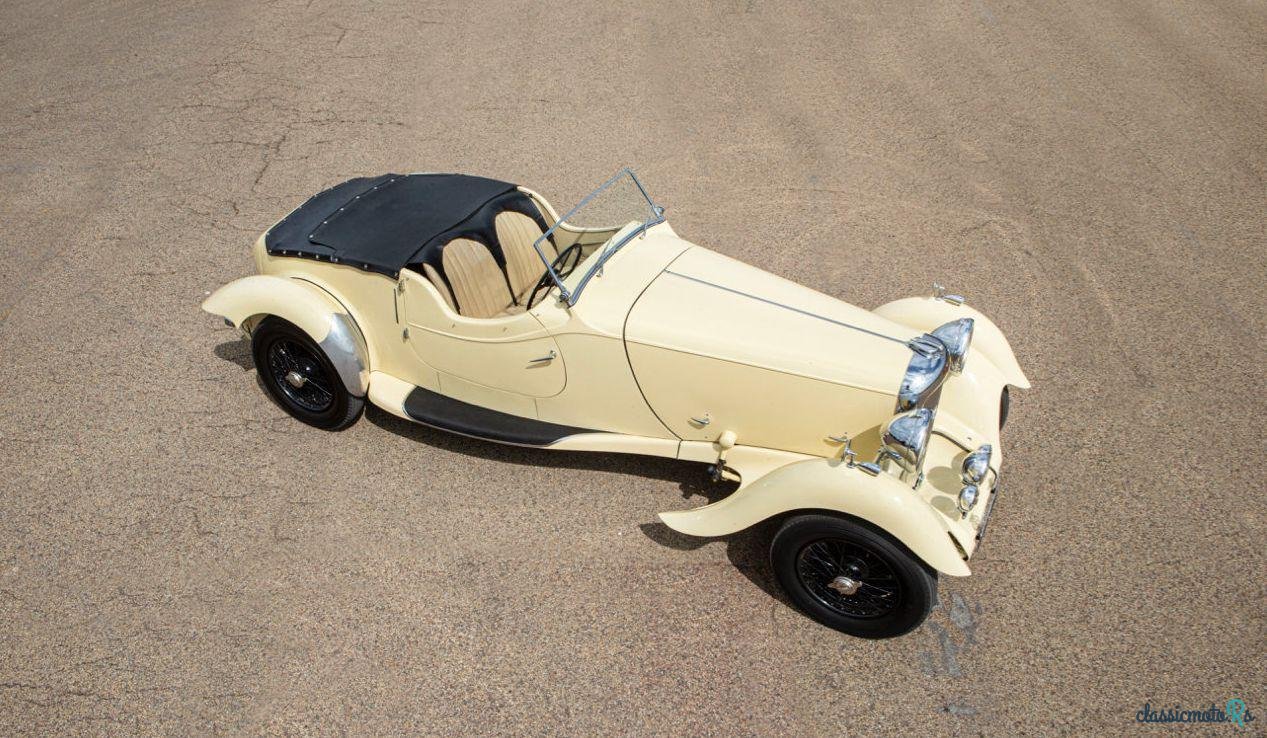
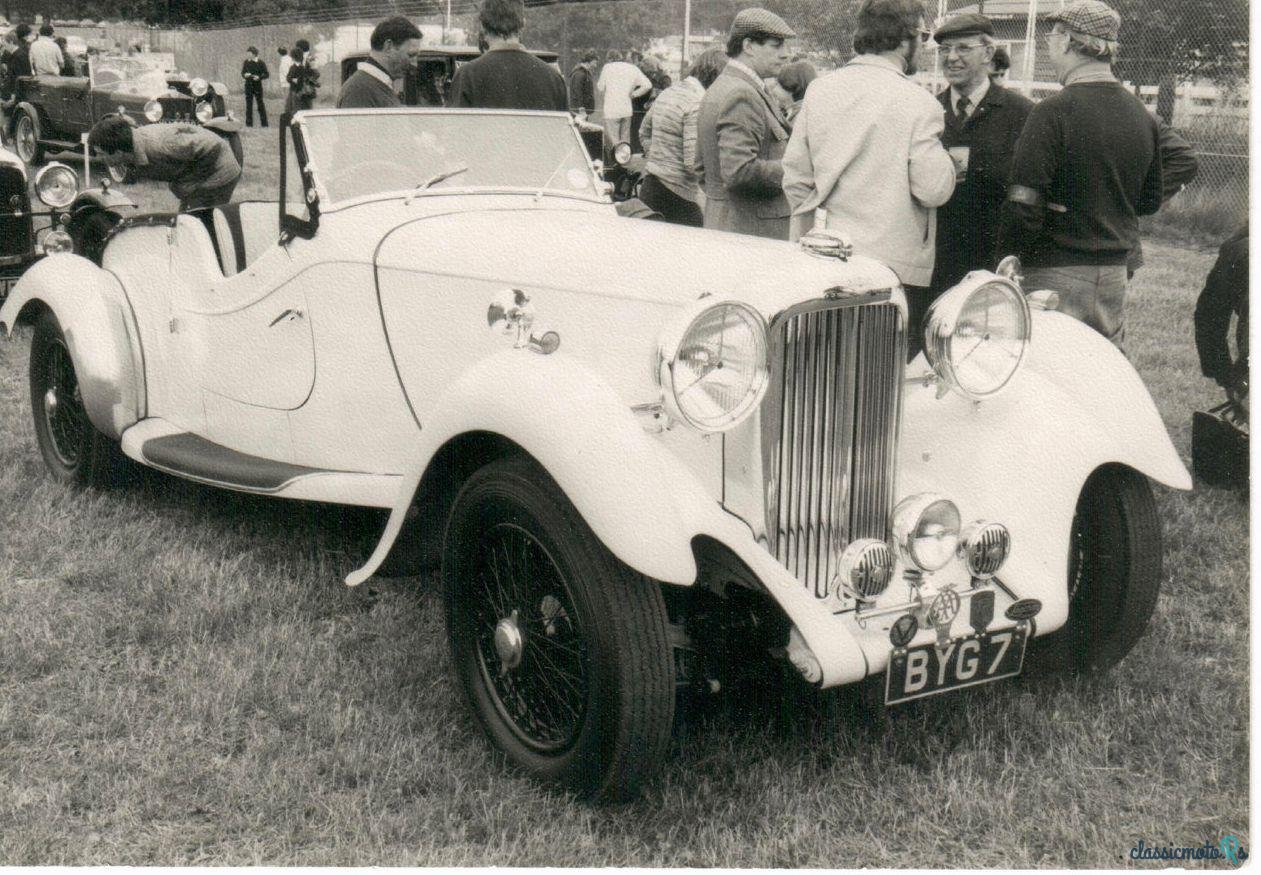
5 photos
1937' Lagonda Lg45 Rapide
Signaler cette annonce!Évaluer!Ajouter aux favoris
NégociablePublié 18 Juin 2020ID: kvfSmx
Périmée
il y a 5 années, 6 mois
il y a 5 années, 6 mois
Information from the owner
Âge: 83 années
Carburant: Essence
Couleur de la carrosserie: Argenté
Commentaires du vendeur sur 1937' Lagonda Lg45 Rapide
One of 24 surviving of the 25 built, just two private owners from new & presented for sale for the first time in forty-five years,
1937 Lagonda LG45 Rapide
Chassis No. 12235
Engine No. 12235
Registration No. BYG 7
Every so often we are asked to present for sale a motorcar that caters for all of the aspirations of the enthusiast and informed collector. The superb Lagonda LG45 Rapide presented here is one such motorcar, for it satisfies the requirements for rarity, desirability, unquestionable provenance, unrepeatable originality and exceptional condition in equal measure. Offered for sale for the first time in forty-five years, ‘BYG 7’ has enjoyed the care of just two custodians since it left the Lagonda works in 1937. Such is the originality and condition of the car, that it was chosen as the front cover car for Lagonda 4½-Litre & V12 In Detail 1933 – 40 by Arnold Davey. It was, quite fairly, chosen as the reference point for how a LG45 Rapide should be and indeed how a 1930s Lagonda should look. Presented for sale here then, is a motorcar that is perhaps best described as the cream of a very fine crop…
The Lagonda LG45 Rapide
While Lagonda had commenced production of motor vehicles as far back as 1906 it was during a time of severe financial woes in the 1930s that Lagonda enjoyed its halcyon days. At the end of the 1920s Lagonda had started to use proprietary engines from Meadows and Crossley as their own 2-Litre overhead cam-shaft model had proved to be expensive, heavy and not hugely powerful. 1933 saw the introduction of the 100mph M45 model, powered by Meadows’ lusty 4.5-Litre straight-six, an engine that was to be put to good use in the S-Type Low Chassis Invicta as well as a variety of Lagondas until the introduction of the V12 model in 1938.
1935 saw a somewhat controversial victory for Lagonda at the Le Mans 24 Hour Race where the Fox & Nichol Team’s M45 Rapide shared by Johnny Hindmarsh and, a 21-year old, Luis Fontés narrowly bettered the all-conquering team of Alfa Romeo 8Cs – a result that one would think would do nothing to harm the fortunes of the Lagonda firm not to mention making life much easier for the salesman of the marque. Nevertheless, in the same month the Lagonda company went into receivership, but perhaps as a result of their Le Mans success, the company was purchased by Alan P. Good who not only managed to outbid Rolls-Royce but also persuaded W.0. Bentley to leave Rolls-Royce and join the business.
Introduced in 1936 the Lagonda LG45 Rapide utilised much of the technology found in the racing variants with added refinements introduced under the guidance of W.O. Bentley. Clothed in lavish coachwork, the design of which was penned by Frank Feeley who went on to design the delectable Aston Martin DB3S, the LG45 Rapide featured cutaway doors, flowing wings and exuberant chromed side exhausts similar to those found on the continental Mercedes-Benz and Horch of the same era. These days the most exquisite designs often only make it to the concept car stage at best, yet the LG45 Rapide was no concept car, but a rare breed production supercar. The design managed to comfortably incorporate four-seats, yet had the underpinnings of a Le Mans winner – a car capable of well over 100mph. The performance of the LG45 Rapide was ably proved by The Autocar magazine when, after muttering that the Rapide must be some sort of ‘Promenade Percy’ they promptly dispelled their own rumours by publishing an official top speed of 108.2mph after road testing the first production model. Indeed, their driver claimed to have achieved speeds in excess of 113mph in the car before successfully writing it off in a huge accident!
As a result of the efforts of their driver, 24 of the 25 LG45 Rapides produced survive, but this is a telling point indeed. Should the desirability of these rare thoroughbreds ever be in question, the figures speak for themselves – such is their desirability that all remaining examples are accounted for albeit in varying states of originality. To this end the Lagonda LG45 Rapide is supremely eligible for events and ownership of one enables entry into a highly exclusive club.
‘BYG 7’
Contained within the history file of this particularly fine Lagonda LG45 Rapide is a wonderful account of its history written up by the current owner who is also proud to be the second owner of the car. His history of the car is supported by copy factory records, photographs, log-books and correspondence with a family friend of the original owner who had passed his driving test in the Rapide.
Chassis no. 12335 was the 14th LG45 Rapide produced and was sold new via Ransom & Robertson of Bedford. It is perhaps apt that the concessionaires had the word Ransom in their title as a sum of over £1,250.00 was required for the purchase of the Rapide, a vast sum in 1937. Registered ‘BYG 7’ it was delivered to Hugh Dixon Carr at Bedford School on the 30th July 1937. Hugh Dixon Carr, or ‘Chukka’ as the family knew him, was born in 1894 and spent his formative years at Low Wood, Ben Rhydding, Ilkley just south of the Yorkshire Dales. At the age of 16 he contracted Polio. When this happened his girlfriend abandoned him, but he was determined not to let his illness get in the way of having fun. Although much older than his fellow undergraduates, he managed to successfully complete his education at Keeble College, Oxford, where he read Geography. He subsequently taught Geography at Clevedon House School and then Oakham School before becoming The Master at Bedford School. ‘Chukka’ would have a go at anything and never considered failure to be a part of his vocabulary. He even built his own skiff, a copy photograph of which is contained within the history file with ‘H.D.C.’ aboard and afloat!
Hugh Dixon Carr was part of the family who owned the famous department store, Brown Muff & Co. Based in Yorkshire and the North-East, the firm was hugely successful for a time. Known as ‘The Harrods of the North’ it was a wealthy company so presumably funds were not an issue for family members. On the 29th April 1937, at the age of 43, Hugh Dixon Carr visited the Lagonda works at Staines, travelling there in a 3-Litre Lagonda that he owned at that stage. During his visit, he was introduced to the Rapide model and, enamoured by the flamboyant design, decided to order one for himself. Due to the disability caused by the Polio he found it difficult to use his right leg and thus the factory records note various alterations to the standard specifications. Longer ‘M45-type’ advance and retard levers were fitted together with a hand throttle similar to that on his 3-litre. The brake lights were coupled to the hand brake, weaker springs were fitted to the front brake shoes and also a brake balancer spring to the balancer link. No off-side door handle was required (although one has been fitted by the current owner) as, with his leg-irons, it was easier to enter the car from the passenger side and slide across. ‘BYG 7’ was also fitted with fold-down front seats and chromed G.B. letters before it left the factory, the latter to cater for numerous trips to Scandinavia that ‘Chukka” undertook in his Rapide. The modifications are noted on the factory records and there are also a number of neatly underlined notes, written in red pen by ‘H.D.C.’ in the original instruction book that comes with the car.
‘BYG 7’ was serviced by Glovers Garages Ltd. of Ilkley, a sub-agent to Central Motors of Bradford, who looked after Lagonda sales to the East of the Pennines during the 1930s. Their service records for the Rapide were obtained by the current owner and are also included within the history file for the car. The service records show that by the 26th October 1938 ‘BYG 7’ had already covered 29,162 miles and that by the 13th June 1939 40,456 miles had been covered. This high mileage was later explained to the current owner by a Mr. Richard Neil, who had been a pupil at Bedford School and whose family had become close friends with Hugh Dixon Carr at the time he owned the Rapide.
Neil’s chance encounter with the current owner and subsequent supply of history and photographs is written up by the current owner and reads as follows:
‘On our way back from the VSCC Malvern event in 1984 which I attended with the Rapide, I stopped for petrol just outside Whitchurch, Shropshire when by chance and all of a sudden an old battered car came onto the forecourt at much speed, skidded to a halt and the driver, duly excited, shouted “I passed my driving test in that car!” that was Richard Neil…..’
Richard Neil recounted that ‘BYG 7’ was driven to Scandinavia on a number of occasions by ‘Chukka’ who would drive from Bedford to John O’ Groats within the day. From there he would take the ferry from Scrabstar to Bergan via the Orkney and Shetland Isles hence the high mileage covered during the first three years of the car’s life. Neil also tells the story of how the Rapide was nearly lost on a trip to Norway in 1940. With the threat of invasion looming the Norwegian shipping company was being highly selective about what and whom it would carry. Thankfully ‘BYG 7’ was squeezed onto the ship from Bergan to the UK shortly before the Germans swept into Norway. Thankfully both the Lagonda and Hugh Dixon Carr made it back to England where they survived The War.
Having lead a quite extraordinary and fascinating life, Hugh Dixon Carr passed away on Christmas Day 1974. He had retained ownership of ‘BYG 7’ throughout his life and after his passing his beloved Lagonda Rapide was sold by Messrs. Richard J. Newsholme Limited of Keighley. The current owner, a highly respected and much-loved member of the Northern Lagonda Section purchased ‘BYG 7’ from Richard J. Newsholme Limited on the 28th August 1975, and the invoice for this purchase is included in the file. At this time, a sympathetic program of mechanical recommissioning was carried out by the owner and various local garages in order to get the Rapide back on the road. Aside from the mechanical works ‘BYG 7’ was re-upholstered throughout as the front seats had been badly damaged after years of Hugh Dixon-Carr sliding across the seats with his leg-irons. Once back on the road the car was proudly entered for the FIVA Rally in Harrogate where out of 167 vintage cars in the vintage class ‘BYG 7’ took second place and was awarded the Benzoyl Silver Tray.
Contained within the history file are two road-books, in which the current owner has noted all of the mileage covered in ‘BYG 7’ during his ownership. In 1991, with a recorded mileage of 89,361 on the odometer, the original Meadows engine was removed and treated to a thorough rebuild, the details of which are listed in the comprehensive file. The rebuilt engine was refitted with the road test mileage noted at 89,381. During the past two decades, the owner and his wife have tended to employ their M45 Tourer ‘BPD 798’ (also offered for sale by Robert Glover Limited) for the longer continental tours organised by The Lagonda Club, and thus ‘BYG 7’ has been given a well-earned respite from long distance touring although it has been used for numerous local events. At the time of writing, the original Smiths odometer reads 93,974 miles.
The story of this beautiful Lagonda LG45 Rapide, coupled with its fine condition tells of a life well led, a life that was also well led by the original owner Hugh Dixon Carr, despite his disabilities.
So, what next for ‘BYG 7?’ Well surely a road trip to Norway is in order? To Bergan & Back, in honour of ‘Chukka’ and a life well led…
1937 Lagonda LG45 Rapide
Chassis No. 12235
Engine No. 12235
Registration No. BYG 7
Every so often we are asked to present for sale a motorcar that caters for all of the aspirations of the enthusiast and informed collector. The superb Lagonda LG45 Rapide presented here is one such motorcar, for it satisfies the requirements for rarity, desirability, unquestionable provenance, unrepeatable originality and exceptional condition in equal measure. Offered for sale for the first time in forty-five years, ‘BYG 7’ has enjoyed the care of just two custodians since it left the Lagonda works in 1937. Such is the originality and condition of the car, that it was chosen as the front cover car for Lagonda 4½-Litre & V12 In Detail 1933 – 40 by Arnold Davey. It was, quite fairly, chosen as the reference point for how a LG45 Rapide should be and indeed how a 1930s Lagonda should look. Presented for sale here then, is a motorcar that is perhaps best described as the cream of a very fine crop…
The Lagonda LG45 Rapide
While Lagonda had commenced production of motor vehicles as far back as 1906 it was during a time of severe financial woes in the 1930s that Lagonda enjoyed its halcyon days. At the end of the 1920s Lagonda had started to use proprietary engines from Meadows and Crossley as their own 2-Litre overhead cam-shaft model had proved to be expensive, heavy and not hugely powerful. 1933 saw the introduction of the 100mph M45 model, powered by Meadows’ lusty 4.5-Litre straight-six, an engine that was to be put to good use in the S-Type Low Chassis Invicta as well as a variety of Lagondas until the introduction of the V12 model in 1938.
1935 saw a somewhat controversial victory for Lagonda at the Le Mans 24 Hour Race where the Fox & Nichol Team’s M45 Rapide shared by Johnny Hindmarsh and, a 21-year old, Luis Fontés narrowly bettered the all-conquering team of Alfa Romeo 8Cs – a result that one would think would do nothing to harm the fortunes of the Lagonda firm not to mention making life much easier for the salesman of the marque. Nevertheless, in the same month the Lagonda company went into receivership, but perhaps as a result of their Le Mans success, the company was purchased by Alan P. Good who not only managed to outbid Rolls-Royce but also persuaded W.0. Bentley to leave Rolls-Royce and join the business.
Introduced in 1936 the Lagonda LG45 Rapide utilised much of the technology found in the racing variants with added refinements introduced under the guidance of W.O. Bentley. Clothed in lavish coachwork, the design of which was penned by Frank Feeley who went on to design the delectable Aston Martin DB3S, the LG45 Rapide featured cutaway doors, flowing wings and exuberant chromed side exhausts similar to those found on the continental Mercedes-Benz and Horch of the same era. These days the most exquisite designs often only make it to the concept car stage at best, yet the LG45 Rapide was no concept car, but a rare breed production supercar. The design managed to comfortably incorporate four-seats, yet had the underpinnings of a Le Mans winner – a car capable of well over 100mph. The performance of the LG45 Rapide was ably proved by The Autocar magazine when, after muttering that the Rapide must be some sort of ‘Promenade Percy’ they promptly dispelled their own rumours by publishing an official top speed of 108.2mph after road testing the first production model. Indeed, their driver claimed to have achieved speeds in excess of 113mph in the car before successfully writing it off in a huge accident!
As a result of the efforts of their driver, 24 of the 25 LG45 Rapides produced survive, but this is a telling point indeed. Should the desirability of these rare thoroughbreds ever be in question, the figures speak for themselves – such is their desirability that all remaining examples are accounted for albeit in varying states of originality. To this end the Lagonda LG45 Rapide is supremely eligible for events and ownership of one enables entry into a highly exclusive club.
‘BYG 7’
Contained within the history file of this particularly fine Lagonda LG45 Rapide is a wonderful account of its history written up by the current owner who is also proud to be the second owner of the car. His history of the car is supported by copy factory records, photographs, log-books and correspondence with a family friend of the original owner who had passed his driving test in the Rapide.
Chassis no. 12335 was the 14th LG45 Rapide produced and was sold new via Ransom & Robertson of Bedford. It is perhaps apt that the concessionaires had the word Ransom in their title as a sum of over £1,250.00 was required for the purchase of the Rapide, a vast sum in 1937. Registered ‘BYG 7’ it was delivered to Hugh Dixon Carr at Bedford School on the 30th July 1937. Hugh Dixon Carr, or ‘Chukka’ as the family knew him, was born in 1894 and spent his formative years at Low Wood, Ben Rhydding, Ilkley just south of the Yorkshire Dales. At the age of 16 he contracted Polio. When this happened his girlfriend abandoned him, but he was determined not to let his illness get in the way of having fun. Although much older than his fellow undergraduates, he managed to successfully complete his education at Keeble College, Oxford, where he read Geography. He subsequently taught Geography at Clevedon House School and then Oakham School before becoming The Master at Bedford School. ‘Chukka’ would have a go at anything and never considered failure to be a part of his vocabulary. He even built his own skiff, a copy photograph of which is contained within the history file with ‘H.D.C.’ aboard and afloat!
Hugh Dixon Carr was part of the family who owned the famous department store, Brown Muff & Co. Based in Yorkshire and the North-East, the firm was hugely successful for a time. Known as ‘The Harrods of the North’ it was a wealthy company so presumably funds were not an issue for family members. On the 29th April 1937, at the age of 43, Hugh Dixon Carr visited the Lagonda works at Staines, travelling there in a 3-Litre Lagonda that he owned at that stage. During his visit, he was introduced to the Rapide model and, enamoured by the flamboyant design, decided to order one for himself. Due to the disability caused by the Polio he found it difficult to use his right leg and thus the factory records note various alterations to the standard specifications. Longer ‘M45-type’ advance and retard levers were fitted together with a hand throttle similar to that on his 3-litre. The brake lights were coupled to the hand brake, weaker springs were fitted to the front brake shoes and also a brake balancer spring to the balancer link. No off-side door handle was required (although one has been fitted by the current owner) as, with his leg-irons, it was easier to enter the car from the passenger side and slide across. ‘BYG 7’ was also fitted with fold-down front seats and chromed G.B. letters before it left the factory, the latter to cater for numerous trips to Scandinavia that ‘Chukka” undertook in his Rapide. The modifications are noted on the factory records and there are also a number of neatly underlined notes, written in red pen by ‘H.D.C.’ in the original instruction book that comes with the car.
‘BYG 7’ was serviced by Glovers Garages Ltd. of Ilkley, a sub-agent to Central Motors of Bradford, who looked after Lagonda sales to the East of the Pennines during the 1930s. Their service records for the Rapide were obtained by the current owner and are also included within the history file for the car. The service records show that by the 26th October 1938 ‘BYG 7’ had already covered 29,162 miles and that by the 13th June 1939 40,456 miles had been covered. This high mileage was later explained to the current owner by a Mr. Richard Neil, who had been a pupil at Bedford School and whose family had become close friends with Hugh Dixon Carr at the time he owned the Rapide.
Neil’s chance encounter with the current owner and subsequent supply of history and photographs is written up by the current owner and reads as follows:
‘On our way back from the VSCC Malvern event in 1984 which I attended with the Rapide, I stopped for petrol just outside Whitchurch, Shropshire when by chance and all of a sudden an old battered car came onto the forecourt at much speed, skidded to a halt and the driver, duly excited, shouted “I passed my driving test in that car!” that was Richard Neil…..’
Richard Neil recounted that ‘BYG 7’ was driven to Scandinavia on a number of occasions by ‘Chukka’ who would drive from Bedford to John O’ Groats within the day. From there he would take the ferry from Scrabstar to Bergan via the Orkney and Shetland Isles hence the high mileage covered during the first three years of the car’s life. Neil also tells the story of how the Rapide was nearly lost on a trip to Norway in 1940. With the threat of invasion looming the Norwegian shipping company was being highly selective about what and whom it would carry. Thankfully ‘BYG 7’ was squeezed onto the ship from Bergan to the UK shortly before the Germans swept into Norway. Thankfully both the Lagonda and Hugh Dixon Carr made it back to England where they survived The War.
Having lead a quite extraordinary and fascinating life, Hugh Dixon Carr passed away on Christmas Day 1974. He had retained ownership of ‘BYG 7’ throughout his life and after his passing his beloved Lagonda Rapide was sold by Messrs. Richard J. Newsholme Limited of Keighley. The current owner, a highly respected and much-loved member of the Northern Lagonda Section purchased ‘BYG 7’ from Richard J. Newsholme Limited on the 28th August 1975, and the invoice for this purchase is included in the file. At this time, a sympathetic program of mechanical recommissioning was carried out by the owner and various local garages in order to get the Rapide back on the road. Aside from the mechanical works ‘BYG 7’ was re-upholstered throughout as the front seats had been badly damaged after years of Hugh Dixon-Carr sliding across the seats with his leg-irons. Once back on the road the car was proudly entered for the FIVA Rally in Harrogate where out of 167 vintage cars in the vintage class ‘BYG 7’ took second place and was awarded the Benzoyl Silver Tray.
Contained within the history file are two road-books, in which the current owner has noted all of the mileage covered in ‘BYG 7’ during his ownership. In 1991, with a recorded mileage of 89,361 on the odometer, the original Meadows engine was removed and treated to a thorough rebuild, the details of which are listed in the comprehensive file. The rebuilt engine was refitted with the road test mileage noted at 89,381. During the past two decades, the owner and his wife have tended to employ their M45 Tourer ‘BPD 798’ (also offered for sale by Robert Glover Limited) for the longer continental tours organised by The Lagonda Club, and thus ‘BYG 7’ has been given a well-earned respite from long distance touring although it has been used for numerous local events. At the time of writing, the original Smiths odometer reads 93,974 miles.
The story of this beautiful Lagonda LG45 Rapide, coupled with its fine condition tells of a life well led, a life that was also well led by the original owner Hugh Dixon Carr, despite his disabilities.
So, what next for ‘BYG 7?’ Well surely a road trip to Norway is in order? To Bergan & Back, in honour of ‘Chukka’ and a life well led…
